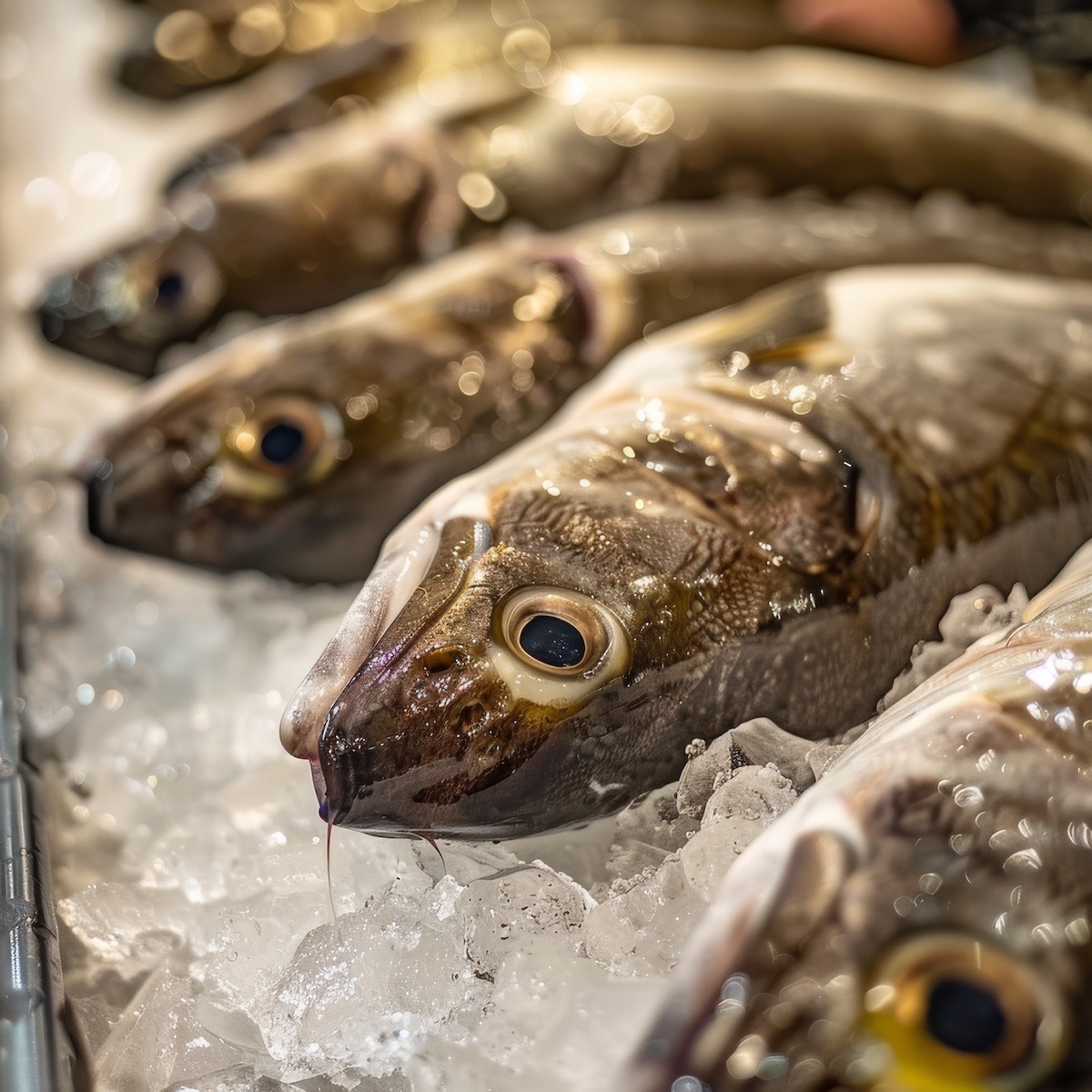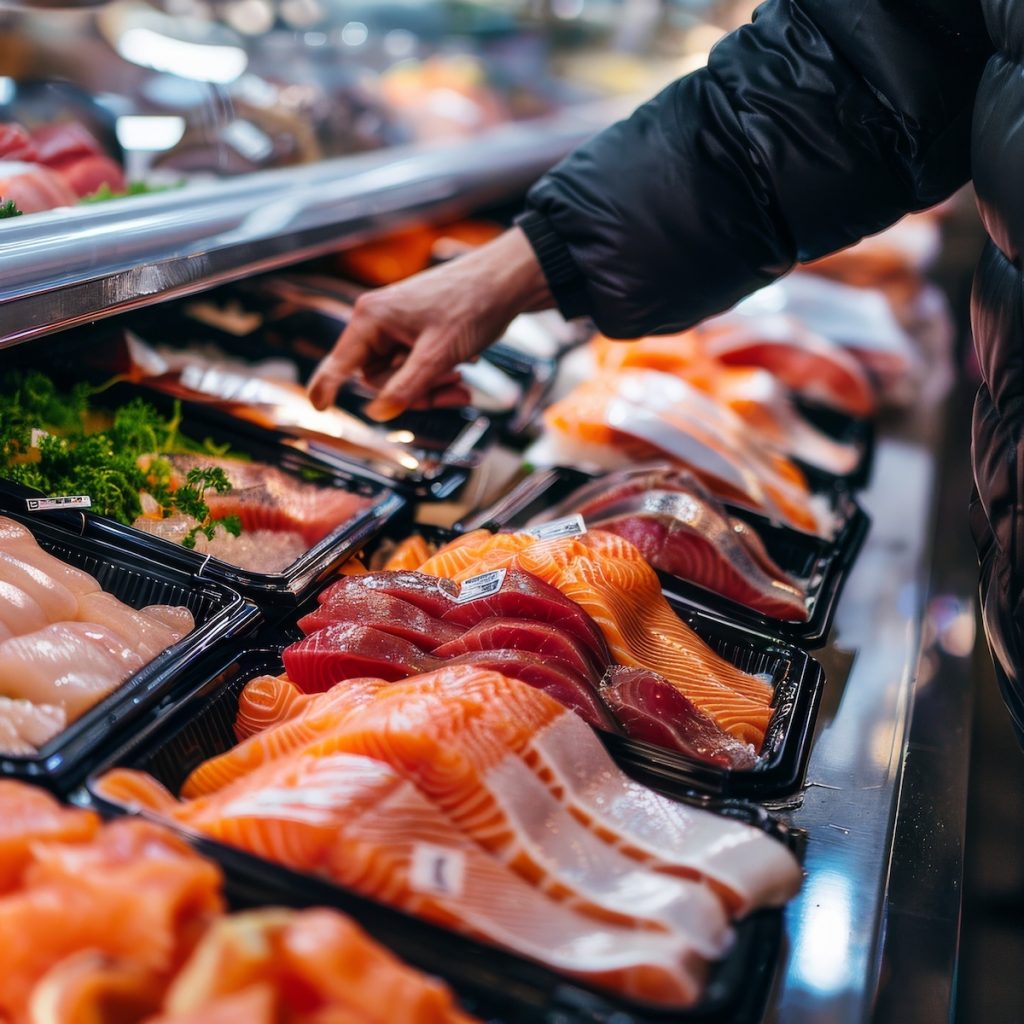How to Buy Seafood
Making informed choices ensures freshness, flavor, and sustainability when buying seafood. Whether you’re a seasoned home cook or a novice in the kitchen, selecting suitable seafood can elevate your culinary creations and support responsible fishing practices. This post will help you navigate the seafood market, offering tips on what to look for and how to choose the best options for your needs.
First and foremost, freshness is vital. Fresh seafood should have a clean, ocean-like smell, free from off-putting odors. The eyes of whole fish should be clear and bright, and the flesh should be firm and resilient to the touch. For shellfish, such as clams and mussels, ensure they are tightly closed or close when tapped.
Understanding labels and certifications can also help you make sustainable choices. Look for certifications from organizations like the Marine Stewardship Council (MSC) or Aquaculture Stewardship Council (ASC), which indicate responsible fishing and farming practices. Additionally, purchasing local fisheries supports the local economy and often guarantees fresher products.
Whether shopping at a local fishmonger, supermarket, or farmers’ market, these tips will help you select high-quality, sustainable seafood, ensuring your dishes are delicious and environmentally conscious.
Buying Seafood at the Market
When buying fish at the supermarket, consider the following factors to ensure you’re selecting the freshest and highest quality product:
- Smell: Fresh fish should have a clean, briny smell like the ocean. Avoid fish with a strong, fishy, or ammonia-like odor.
- Eyes: For whole fish, the eyes should be clear, bright, and slightly bulging. Dull or sunken eyes are a sign of old fish.
- Gills: Fresh fish will have bright red or pink gills. Avoid fish with brown or gray gills, as these indicate a lack of freshness.
- Flesh: The flesh of the fish should be firm and resilient. It should spring back when pressed gently. Avoid fish with flesh that appears mushy or has a dull color.
- Scales: The scales should be shiny and adhere tightly to the skin. Loose or missing scales are a sign of poor handling or aging.
- Moisture: Fresh fish should be moist but not slimy. Excessive slime can indicate that the fish is past its prime.
- Packaging: Check the packaging for any signs of damage, leaks, or excessive moisture. Ensure the fish is stored at the proper temperature, ideally on ice or refrigerated.
- Labeling: Look for clear labeling that includes the species of fish, the catch or harvest date, and the source. This information can help you make more informed choices about sustainability and freshness.
- Certifications: Opt for fish certified by reputable organizations such as the Marine Stewardship Council (MSC) or Aquaculture Stewardship Council (ASC), which indicate sustainable fishing or farming practices.
- Color: The fish’s flesh should be vibrant without any discoloration. For example, salmon should have a rich, pink hue, while white fish should be opaque and not yellow.
Fresh or Previously Frozen
When buying from a supermarket, it is important to know if the fish is fresh or frozen. Here are some reasons why this information matters:
- Quality and Texture: Fresh fish generally has a firmer texture and better flavor than fish that have been frozen and thawed. However, some types of fish may become mushy or lose their original texture after being frozen.
- Shelf Life: Previously frozen fish typically have a shorter shelf life once thawed than fish that have never been frozen. Knowing the status helps you plan your meals and use the fish before it spoils.
- Nutritional Value: Freezing fish can sometimes affect its nutritional content, though the difference is usually minimal. Fresh fish may retain more of its original nutrients.
- Preparation Methods: Certain recipes or cooking methods may yield better results with fresh fish. For example, raw dishes like sushi or ceviche often require the highest quality fresh fish to ensure safety and optimal taste.
- Labeling and Transparency: Honest labeling helps you make informed choices. Some fish are frozen at sea to preserve freshness, which can be a good option if fresh fish isn’t available. However, it’s crucial to know what you’re buying to avoid surprises in quality and taste.
Always check the label or ask the fishmonger about the fish’s status. Transparency in this information ensures you get the best quality for your culinary needs.
Buying Fish From Where?

Knowing where your fish comes from is essential for several reasons:
- Sustainability: Understanding the origin of the fish helps you make more sustainable choices. Certain fisheries may practice sustainable fishing methods that minimize environmental impact and preserve fish populations for future generations.
- Quality and Safety: Different regions and countries have varying standards for seafood quality and safety regulations. Knowing the source ensures the fish meets health and safety standards.
- Traceability: Traceability lets you track the fish’s journey from the sea to your plate. This transparency ensures the fish is legally caught or farmed and helps prevent illegal fishing practices.
- Ethics: Some consumers prefer to support local fisheries or avoid fish from regions known for human rights abuses or unethical labor practices in the fishing industry.
- Freshness: The distance the fish travels affects its freshness. Local fish may be fresher and have a smaller carbon footprint than fish imported from distant locations.
- Allergens and Contaminants: Knowing the origin can also help you avoid fish from regions known for specific contaminants or allergens that you may wish to avoid.
Knowing where your fish comes from can help you make more informed choices that align with your values, support sustainable practices, and ensure the quality and safety of your seafood purchase.
Subbing Out
In the fish industry, “subbing out” typically refers to substituting one type of fish for another, often without clear disclosure to the consumer. This can occur for various reasons:
- Economic Considerations: Some fishmongers or suppliers may substitute a less expensive fish for a more expensive one to increase profit margins or manage costs.
- Availability: If a particular type of fish is in short supply or unavailable, sellers may substitute it with a similar fish that is more readily available.
- Seasonality: Certain types of fish may have seasonal availability. Subbing out allows sellers to offer consistent products year-round by substituting similar fish when seasonal varieties are unavailable.
- Market Demand: Consumer demand can also influence subbing out practices. If a specific type of fish becomes popular or scarce, sellers may substitute it with another, more abundant fish.
However, substituting out can raise concerns about transparency and consumer trust. Fishmongers and suppliers must communicate any substitutions to customers to ensure they make informed purchase choices.
Labels and documentation should accurately reflect the type of fish being sold, its origin, and any substitutions made. This transparency helps maintain integrity in the seafood supply chain and allows consumers to make educated decisions based on their preferences and dietary needs.
Fish That Are Often “Subbed Out”
Several types of fish are more commonly substituted than others due to availability, cost, or similarity in appearance. Some of the most likely fish to be “subbed out” include:
- Snapper: Red snapper is often substituted with less expensive fish like tilapia, rockfish, or Pacific snapper.
- Cod: Atlantic cod is popular but can be overfished and expensive. It may be substituted with haddock, pollock, or other whitefish.
- Salmon: Wild-caught salmon, especially if in short supply, may be substituted with farmed salmon or trout, which has a similar appearance and texture.
- Grouper: Grouper, known for its firm texture and mild flavor, might be substituted with other firm whitefish such as tilapia or catfish.
- Tuna: Higher-priced tuna species like bluefin tuna may be substituted with more affordable varieties such as yellowfin or skipjack tuna.
- Halibut: Pacific halibut is popular but pricey and may be substituted with other flatfish like flounder or sole.
- Sea Bass: Chilean sea bass, or Patagonian toothfish, is often substituted with less expensive fish like black cod or hake.
It’s important for consumers to be aware of these potential substitutions and to ask questions about the origin and species of the fish they are purchasing. Choosing reputable suppliers and building relationships with trusted fishmongers can help ensure transparency and quality in seafood purchases.
Get to Know Your Fishmonger

Getting to know your fishmonger can be pretty crucial for several reasons:
- Quality and Freshness: A trusted fishmonger can guide you to the freshest catches and recommend seasonal varieties. They often have expertise in handling and preparing seafood, ensuring you get the best quality products.
- Trust and Transparency: Building a relationship with your fishmonger fosters trust. They can provide information about where the fish comes from, how it was caught or farmed, and any certifications it may have, allowing you to make informed choices.
- Customization: A fishmonger who knows your preferences can suggest alternatives or unique cuts, ensuring you get precisely what you need for your recipes or dietary preferences.
- Safety and Handling: A reputable fishmonger adheres to proper handling and storage practices, reducing the risk of contamination or spoilage. They can also offer advice on safe handling and storage at home.
- Community Support: Supporting local businesses like fishmongers helps sustain local economies and ensures ongoing access to high-quality seafood in your area.
- Learning Opportunities: Experienced fishmongers can share cooking tips, recipes, and information about different types of seafood, expanding your culinary knowledge and repertoire.
Establishing a relationship with your fishmonger enhances the quality and enjoyment of your seafood purchases and supports sustainable practices and local businesses.








2 Responses
I think this is probably a lot more wide spread than many of us think. I have caught and eaten enough grouper to know what grouper is supposed to look and taste like; recently, I ordered grouper in one of our better local restruants and what they served was not grouper. I asked to speak to the manager and he offered to exchange for something else, explaining, “We bought it for grouper!” If he was willing to be that upfront with me then I am willing to accept his explanation – and I still want grouper when I order grouper.
Best regards,
trapperP
there is a red spot pictured in one of the fillets. Is that a worm? I have seen these many times before in freshwater fish, you poke it with a knife and it expands to about 3 or more inches……